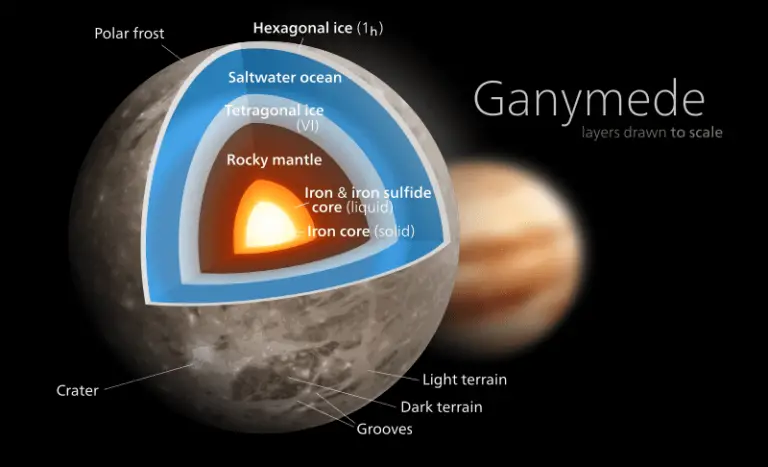5 Sources of Thermal Energy Explained
Sources of thermal energy are; solar radiation, fossil fuels, geothermal processes, biomass and oceans.
It must be noted that the sources of thermal energy can be both materials (like fossil fuels, biomass) and processes (like nuclear reactions, radiation, combustion).
This article discusses the sources of thermal energy, as follows;
1). Solar Radiation (as one of the Sources of Thermal Energy)
Solar thermal radiation is a process that emits thermal energy from the Sun, in the form of electromagnetic waves that can travel freely through space, without any intervening medium required for conduction of energy from one point to another [2].
The source of solar thermal energy itself is nuclear hydrogen radioisotopes, which are abundant in the Sun. These isotopes are constantly undergoing fusion reactions that lead to the formation of helium molecules with release of tremendous amount of radiant heat.
Based on the explanation above, it can be said that solar thermal energy is a converted form of nuclear energy. It can also be argued that solar radiation is closely liked to naturally-occurring hydrogen energy.
There are some reasons why solar radiation is extremely important as a source of thermal energy.
One of these reasons is the fact that the Sun is the primary source of energy for the Earth's ecosystem. Secondly, solar radiation is one of the only sources of thermal energy that are both clean and renewable.
Harnessing solar radiation as a source of thermal energy is an important goal with respect to the efforts at achieving sustainable development and establishing and global green economy.

2). Fossil Fuels
Fossil fuels emit thermal energy through the process of combustion, whereby a fuel is ignited and burnt in the presence of oxygen, with release of significant amounts of heat.
The main source of fossil fuel energy is the Sun, which uses plant and animal biomass as energy storage systems for retention of solar energy in chemical form, through photosynthesis and feeding relationships in the energy pyramid. This chemically-stored solar energy is converted to fossil fuel energy when plant and animal biomass undergoes long-term transformation to form hydrocarbons.
Examples of fossil fuels that produce thermal energy are; natural gas, petroleum and coal.
As of 2023, fossil fuels are the most-used source of thermal energy for electricity generation and heating purposes. This is due to their high energy density compared to other sources like solar and wind.
However, the role of fossil fuels in environmental degradation through greenhouse emissions and climate change, has prompted efforts for their replacement as a major energy resource.
3). Geothermal Processes (as one of the Sources of Thermal Energy)
The process of geothermal energy production commences with nuclear fission as radioisotopes in the Earth's core undergo radioactive decay [1].
Geothermal processes include nuclear fission, thermal conduction and fluid convection.
The two types of thermal energy transfer that occur in geothermal systems, as indicated above, are conduction and convection. These mechanisms help to circulate geothermal heat in the subsurface, and are also responsible for the extraction of this heat and its use by humans.
Thermal energy from geothermal processes and systems can be utilized to generate electricity, as well as for domestic heating and cooling purposes.

4). Biomass
Biomass thermal energy is an alternative term used to describe bioenergy that occurs in the form of heat.
Like fossil fuels, biomass releases significant amounts of heat when it undergoes combustion.
Usable sources of biomass thermal energy include plant matter like wood, and flammable materials from biomass conversion like bioethanol, biomethane and biogas.
The flammable materials derived from conversion of biomass are collectively referred to as biofuel. Like their parent sources, these renewable fuels contain stored solar energy that has been converted to chemical energy in organic matter through photosynthesis and feeding.
Waste-to-energy processes like anaerobic digestion and gasification can be used to convert raw biomass feedstock into refined biofuel, which is often easier and more flexible to handle for industrial purposes [3].
Biomass and its derivatives can be viewed as viable sources of thermal energy, which, like that from fossil fuels, can be used for various industrial and domestic applications. However, the amount of thermal energy per unit volume of biomass is less than that which is obtainable from fossil fuels.
5). Oceans (as one of the Sources of Thermal Energy)
In addition to being a dominant ecosystem on Earth, the ocean is a compound energy resource, which comprises of multiple energy resources that can be used by humans.
Energy resources provided by the ocean include waves, electrolyte (saline water), and ocean thermal resources.
The source of ocean thermal energy is the Sun, whose solar radiation is stored in large quantities within water masses at various depths.
Thermal energy can be extracted from the ocean based on the cyclic trend of differential heating, where surface water masses are of generally higher temperature than those at depth.
The use of oceans as a source of thermal energy is still being assessed and improved.
Conclusion
Sources of thermal energy are;
1. Solar Radiation
2. Fossil Fuels
3. Geothermal Processes
4. Biomass
5. Oceans
References
1). Ayuba, M. G.; Lawal, M. K. (2019). "Investigating geothermal energy resource potential in parts of south western Nigeria using aeromagnetic data." Science World Journal, Vol. 14 No. 3 (2019). Available at: https://www.ajol.info/index.php/swj/article/view/208648. (Accessed 10 February 2023).
2). Lean, J. (1997). "The Sun’s variable radiation and its relevance for Earth." Annual Review of Astronomy and Astrophysics 35(1):33-67. Available at: https://doi.org/10.1146/annurev.astro.35.1.33. (Accessed 8 February 2023).
3). Lee, S. Y.; Sankaran, R.; Wayne, C. K.; Tan, C. H.; Rambabu, K.; Chu, D-T.; Show, P-L. (2019). "Waste to bioenergy: a review on the recent conversion technologies." BMC Energy 1(1). Available at: https://doi.org/10.1186/s42500-019-0004-7. (Accessed 10 February 2023).



